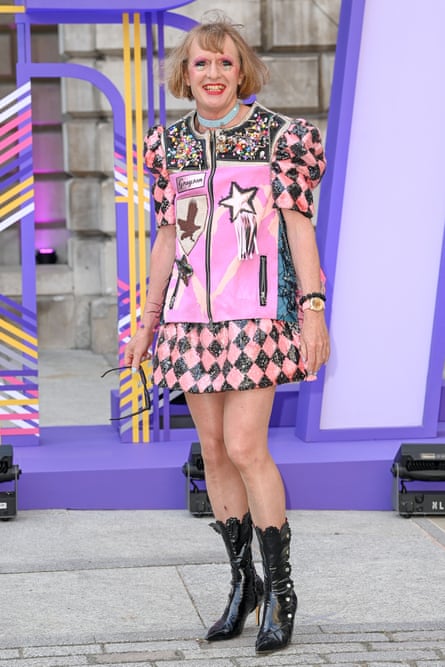
What makes Britain’s capital city so magnetic? Familiar landmarks? The nightlife? Or its financial, fashion and art trades? Maybe. But behind the glamour and money a network of artists is giving London the crucial appeal of a place where new things happen, while working on the edge of poverty.
A survey released on 13 July is to reveal just how close many of London’s visual artists are to giving up on a career that has pushed them to the bottom of the pile. Close to a third of those asked said lack of funds might force them out within five years. And just under half said they cannot afford to build savings or pay into a pension plan.
The research by Acme, which says it is the largest provider of permanent cheap studios in England, comes ahead of a City Hall drive to address the problem.
“A lot of the things we all care about in London, and in other cities with a strong cultural life, don’t have the protection they need,” said Justine Simons, London’s deputy mayor for culture and creative industries. “The artists are what is underneath it all; the engine room. You need them in your city and yet they can’t afford the space.”
Acme’s new artist tenant survey found many are preparing to give up their studios, squeezed by rent increases, the cost of living crisis and Brexit. It reveals the threat from these joint pressures, causing some to cut back on heating and food rather than stint on artist’s materials. Only 12% of those surveyed said they can support themselves solely through art.
“It is like a hostile environment now,” said Gayle Chong Kwan, a resident at Acme’s Warton House in Stratford, east London. “I don’t want my job to become obsolete, with only people supported by family money able to run a studio. At my more established stage I am a little safer, but I was teaching in Edinburgh earlier this year and I certainly saw that there, too, being an artist has a very high cost.”
Chong Kwan, a successful artist who recently worked with the V&A museum, said she suspects the “critical creative faculty” is vastly undervalued. “Being an artist is one of the most insecure jobs you can have anyway,” she said. “It’s not something you do for the money. It’s a way to communicate, emotionally, sociologically and politically. The important thing is to be able to take a studio for longer than a year. People say artists can work in their shed or in a bathroom, and that may be possible for some, but there is great value in being part of a city’s ecology and making it a place to make work, not just where art is shown and sold.”
skip past newsletter promotion
Sign up to The Guide
Free weekly newsletter
Get our weekly pop culture email, free in your inbox every Friday
Enter your email address Enter your email address Sign upPrivacy Notice: Newsletters may contain info about charities, online ads, and content funded by outside parties. For more information see our Privacy Policy. We use Google reCaptcha to protect our website and the Google Privacy Policy and Terms of Service apply.
after newsletter promotion
 View image in fullscreenGrayson Perry, one of the talents who was supported by Acme, at the Royal Academy of Arts summer exhibition preview party in London in June 2023. Photograph: David Fisher/Shutterstock
View image in fullscreenGrayson Perry, one of the talents who was supported by Acme, at the Royal Academy of Arts summer exhibition preview party in London in June 2023. Photograph: David Fisher/Shutterstock
In Acme’s 50 years it has supported more than 8,500 creatives in London, including talents such as Grayson Perry, Maureen Paley and Hew Locke.
“The charity used to describe the people we helped as in ‘necessitous circumstances’, so we’re talking about the impoverished,” said Lea O’Loughlin, co-director of Acme. “We’re proactive about finding who needs help and who can maintain themselves. And we look at the whole lifecycle, not just young artists, because there are plenty of older artists who have not been able to build up a retirement fund. They are no longer able to do the other jobs that used to pay the rent.”
O’Loughlin said she is often “amazed” at the level of commitment an artist will have to their studio, in the face of real want. “The precarity is real and ongoing,” she said. “There’s an assumption artists can work in their own bedrooms with the rise of digital art, but a great proportion still work with paint in a studio. In fact 80% of those we surveyed said that this was ‘either very important to them or essential’.” The solution, she believes, is to ringfence studio spaces for non-commercial artists.
Eline Van der Vlist, of Space, another studio provider in the capital, argues just as passionately. “London needs its artists,” she said. “They are an underpaid group and we need to offer them some stability. It is a real squeeze for them now, even for those in affordable studios. They are always exposed outliers who may have to work for 30 years on the edge before their work is recognised.”
Simons is to announce the extension of City Hall’s Creative Enterprise Zones later this week, along with data that demonstrates how the existing nine zones are recovering better from the economic slump. “The reason we care about culture is because it is who we are in London,” she said. “It is why four out of five people say they come here. And it is a huge generator of wealth.”
Whether extending the zones, with planning work to ensure that developers retain cultural space, will be enough to help struggling artists is unclear. “Many of my fellow artists have moved out of the city,” said Emily Laing, who supports her painting with proofreading work. “Few can afford to live in London, let alone find another £500-plus a month for a small studio.” And there is resentment too about the number of “untalented artists” able to take up precious studio space because they are wealthy.
Simons takes up another theme among London’s disgruntled artists. “Many of them are understandably sick of contributing to the vibrancy of an area and then being booted out,” she said. Artists suggest that Hackney Wick in east London is a case in point.

